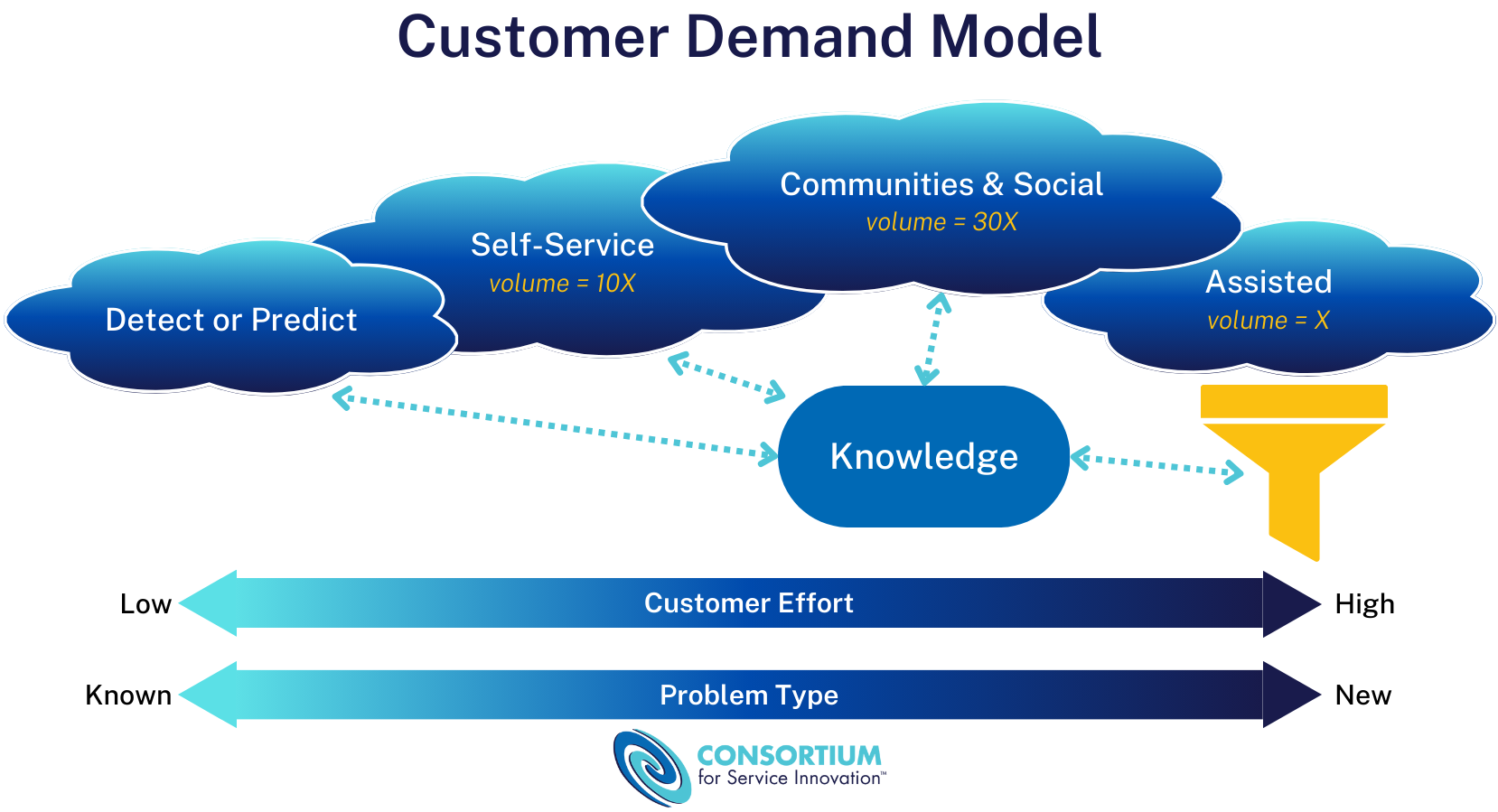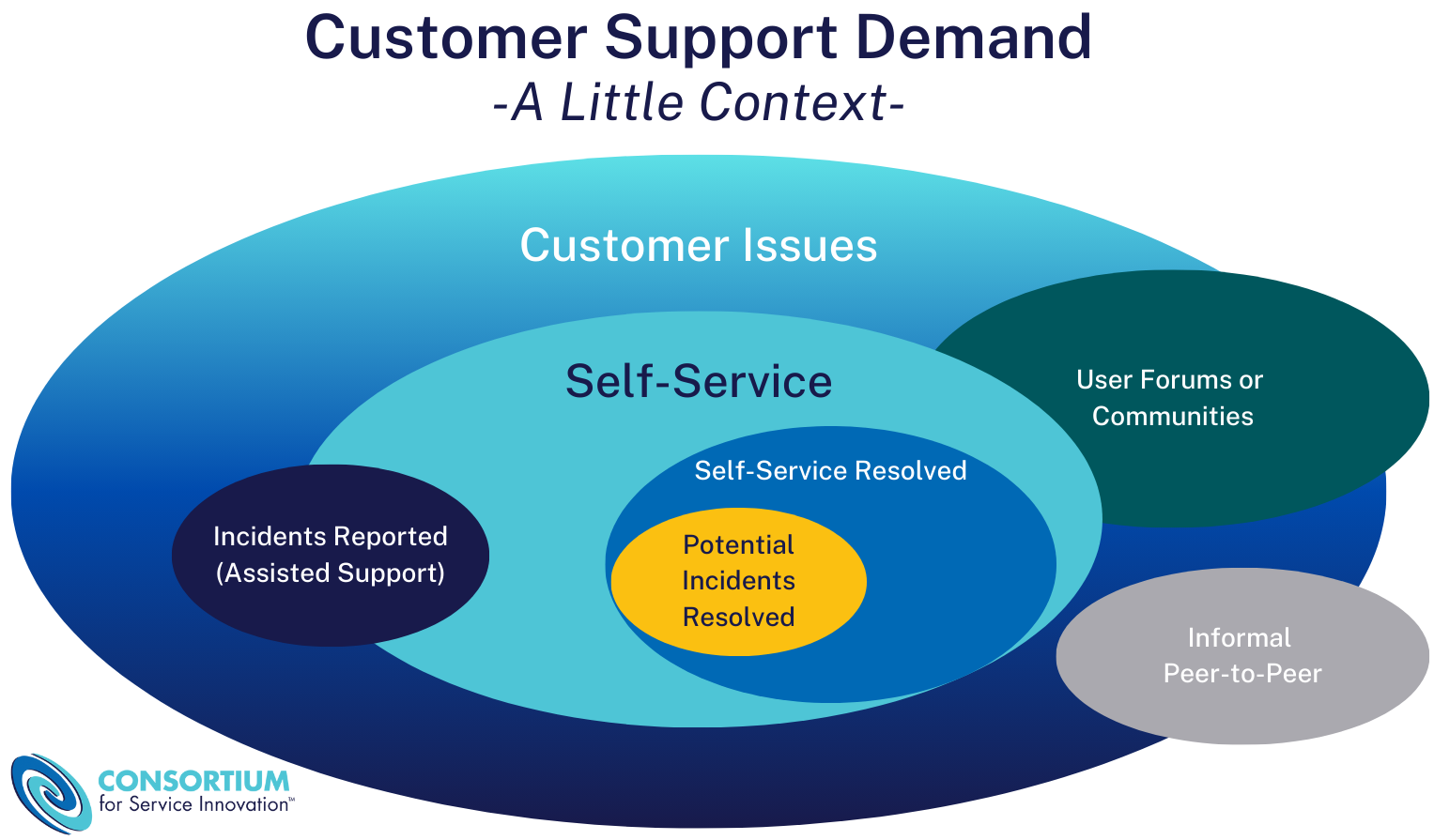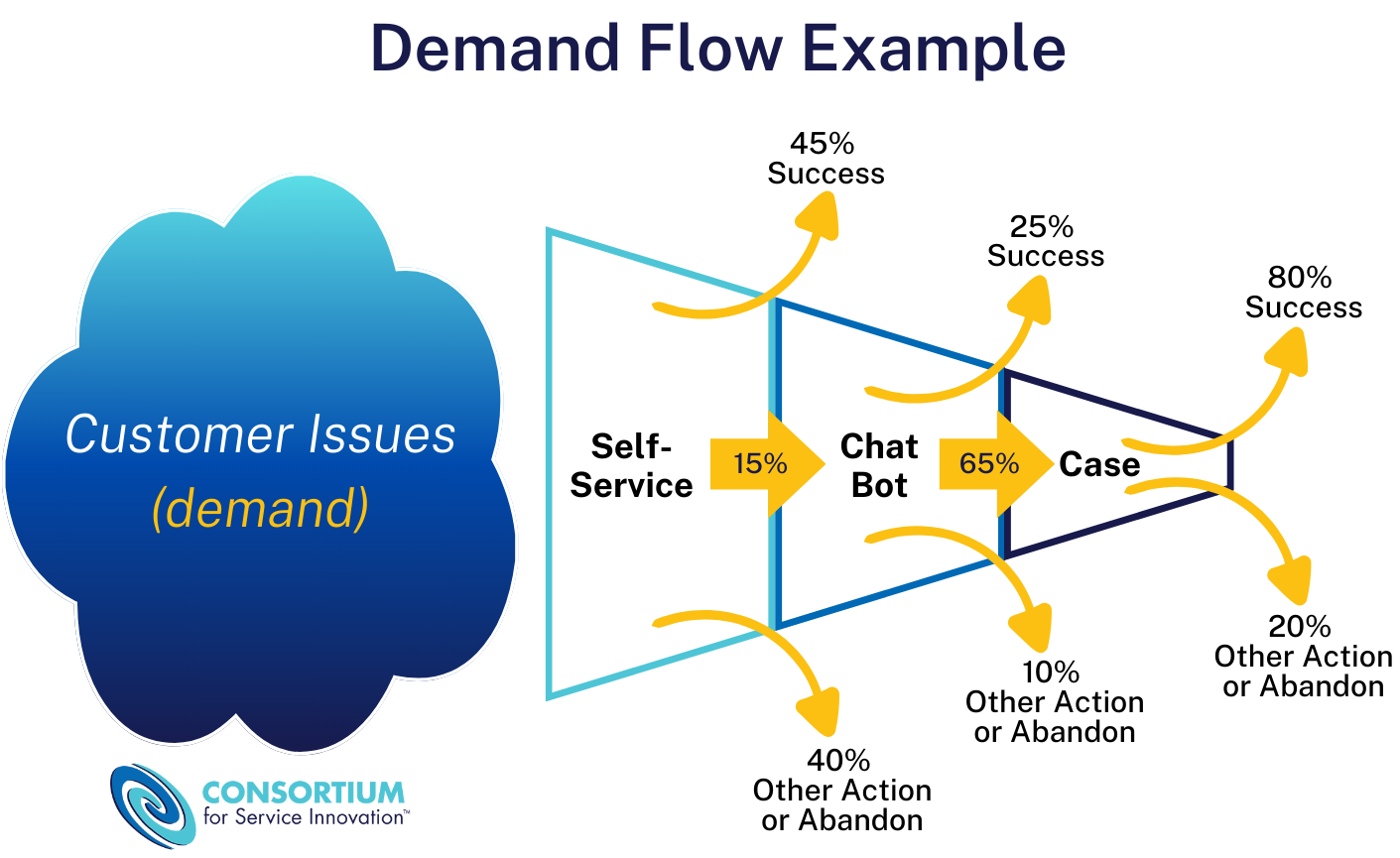Background and Context
Why Measure Channel Success?
The goal of a service organization is to improve customer success and productivity with our products and services. To do this successfully, we must understand the customer's activity and experience.
Traditionally, service organizations have primarily focused on managing the cost of incoming cases, but the scope of customer engagement has expanded way beyond the case. Especially in environments where Knowledge-Centered Service (KCS®) is practiced, we must look at the value created for the organization in the context of the entirety of customer demand - not just engagement through assisted channels.
Successful delivery of knowledge through self-service and communities has provided business-wide benefits, leading to industry changes in customer engagement strategies and the introduction of a wide array of new tools and technology for content creation, delivery, and measurement.
Objective
Our objective is to provide a measurement framework and standard that better articulates the value of delivering knowledge through various channels, particularly for channels outside of the traditional agent-assistance. We aim to measure the organization's success with delivering knowledge through self-service in the context of total demand. To do this, we need input on what success means from both the requestor and the company point of view.
Audience
This work was developed with two audiences in mind:
- The introduction, background and context, executive overview, and assumptions and limitations sections are intended to provide context for practitioners and leadership around why this is important.
- The remainder is guidance for folks who develop and manage the organization’s measurement model.
The Service Engagement Measures Spreadsheet enables us to articulate the value of an effective customer engagement model beyond the mindset of only focusing on cost-savings or preferences for a single number to measure success. The spreadsheet is designed to be used for an organization to benchmark against itself.
Understanding Demand
The Customer Demand Model is one of the foundational ideas that identifies the value of knowledge sharing.
As Consortium Members gained more visibility into the activity of their customers, it became clear that:
- The volume of questions asked or issues raised in self-service is ten times the demand coming into assisted channels.
- In communities and social media spaces, the demand is thirty times what we see in assisted channels.
- Assisted channels serve less that 3% of the total demand from our customers.

This means we have a huge opportunity to improve customer success and productivity with our products and services. If we leverage what we are learning in the assisted model by publishing that knowledge to other, more easily-accessible channels, we can reduce time and level of effort spent on finding answers to known issues, while making sure our Knowledge Workers are available in the assisted channel to work on new issues.
Greg Oxton describes the Customer Demand Model in this 10 minute video.
Cost Avoidance is a Limiting Perspective
Also known as contact avoidance or case deflection, assessing the cost savings associated with issues solved through self-service engagement includes a number of pitfalls.

From a holistic look at customer demand, customers pursue resolution to their issues in a number of ways. Some of these issues are resolved with self-service, but only a small percentage of failed self-service attempts becomes a case or incident in the assisted model.
 The Demand Flow example helps visualize this. While there is some small percentage of issues that a customer will start researching in self-service, move to a chat bot, and then open a case in pursuit of an answer, there are many others where a customer will poke around in Google, maybe land on a self-service article, get distracted, and then decide it wasn't that it is not worth the effort to resolve.
The Demand Flow example helps visualize this. While there is some small percentage of issues that a customer will start researching in self-service, move to a chat bot, and then open a case in pursuit of an answer, there are many others where a customer will poke around in Google, maybe land on a self-service article, get distracted, and then decide it wasn't that it is not worth the effort to resolve.
Therefore, approaching self-service or community success with only cost avoidance in mind is a limiting perspective. Our focus is improved customer success and reduced customer effort. Leveraging our internal investment in KCS by providing knowledge through self-service is a key factor in meeting that goal.
The Customer Experience
Two key concepts that are fundamental to the Consortium’s work are the Value Erosion and Value Add Models. These models address the dynamics of maximizing customer value realization from our products and services and provide additional context around our efforts to measure channel success.
To summarize: value erosion happens when a customer encounters an issue. We want to minimize value erosion by facilitating customer success in finding a resolution as early in their pursuit of a resolution as possible. Customer service and support has focused on the value erosion model for years, but we have an opportunity to look at how we add value. Can we increase the customer’s capability, reduce their effort, and create a pleasant experience without them experiencing an issue? These can be important components of a successful self-service interaction.
Summary
Self-service and Community are important customer engagement methods and, in many situations, it is the requestor’s preferred way to get information. Self-service activity is many times greater than assisted support activity. Requestors seek information via company-provided self-service mechanisms, communities, and social networks.
A requestor (customer, partner, or user) doesn’t necessarily distinguish an organization’s self-service mechanisms from what is available through communities and social networks.
Our goal is to provide a view of the health and value of knowledge offerings across all relevant channels. As a starting point, we are looking at the activity via self-service, communities, and assisted support channels.
